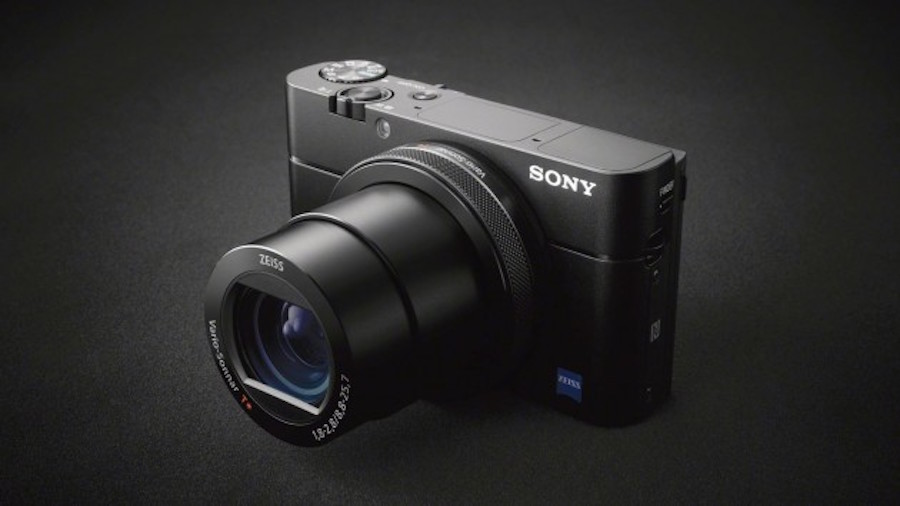Here is a quick comparison of the Sony RX100III vs RX100IV vs RX100V premium digital cameras.
The new Sony RX100 V maintains a 20.1-megapixel 1-inch Exmor RS BSI CMOS sensor and 24-70mm equiv. F1.8-2.8 lens from the IV. On the other hand the camera adds phase-detection AF to achieve focus speeds as fast as 0.05 sec.
The Sony RX10 III bridge camera uses the same 1-inch 20.1-million-pixel stacked sensor as well as 4K/UHD video. The dust and moisture resistant camera offers an XGA OLED EVF with 2.36 million dots, as well as a tilting LCD.
Specifications comparison of the Sony RX100 III vs RX100 IV vs RX100 V cameras
You can see the Sony RX100 III vs RX100 IV vs RX100 V specs comparison table below. Some differences like sensor, image size, shooting speed, lcd size etc.. detailed as bold on the table.
| Features | Sony RX100 III | Sony RX100 IV | Sony RX100 V |
|---|---|---|---|
| Announcement Date | 05/28/2014 | 06/10/2015 | 10/06/2016 |
| Sensor Type | BSI CMOS | Stacked CMOS | Stacked CMOS |
| Sensor Resolution | 20.1 MP | 20.1 MP | 20.1 MP |
| Sensor Size | 13.2 x 8.8mm (1″) | 13.2 x 8.8mm (1″) | 13.2 x 8.8mm (1″) |
| Native ISO Range | 125-12,800 | 125-12,800 | 125-12,800 |
| Image Processor | Bionz X | Bionz X | Bionz X |
| Phase Detection Autofocus | No | No | Yes |
| Phase Detection Autofocus Points | N/A | N/A | 315 AF Points |
| Lens Focal Length | 8.8-25.7mm | 8.8-25.7mm | 8.8-25.7mm |
| Focal Length in 35mm Equiv | 24-70mm | 24-70mm | 24-70mm |
| Lens Aperture | f/1.8-f/2.8 | f/1.8-f/2.8 | f/1.8-f/2.8 |
| Integrated ND Filter | Yes | Yes | Yes |
| Maximum Shutter Speed | 1/2000 sec | 1/32000 sec | 1/32000 sec |
| Startup Time | 2.0 sec | 2.0 sec | 2.0 sec |
| Anti Distortion Shutter | No | Yes | Yes |
| Auto ISO Min Shutter Speed | No | Yes | Yes |
| EVF | 1.44 Million Dot EVF | 2.36 Million Dot EVF | 2.36 Million Dot EVF |
| Flash Hotshoe | No | No | No |
| Built-in Flash | Yes | Yes | Yes |
| Continuous Shooting Speed | 10 fps | 16 fps | 24 fps |
| Buffer Size | 48 JPEG / 26 RAW | 48 JPEG / 26 RAW | 150 JPEG + RAW |
| LCD Screen | 3.0″ Tilting, +180°/-45° | 3.0″ Tilting, +180°/-45° | 3.0″ Tilting, +180°/-45° |
| Video Recording | 1080p, up to 60 fps | 4K, up to 30 fps | 4K, up to 30 fps |
| S-Log2/S-Gamut | No | No | Yes |
| Slow Motion Video | Yes, Up to 120 fps | Yes, Up to 960 fps | Yes, Up to 960 fps |
| Slow Motion Video Duration | 29 min | 4 sec | 8 sec |
| Built-in WiFi | Yes | Yes | Yes |
| Battery Life (CIPA) | 320 shots | 280 shots | 220 shots |
| Weight | 290g | 298g | 299g |
| Size | 102×58×41mm | 102x58x41mm | 102x58x41mm |
| Price | $748 | $898 | $998 |
Verdict
As you can see from the table above, the Sony RX100 V comes with much richer feature-set and specifications compared to its predecessors. However, when it comes to the price tag, it is far more expensive than its predecessors too. So which one to buy between Sony RX100 III vs RX100 IV vs RX100 V cameras.
If you really need faster AF system, 4K video recording technology or slow motion video, the RX100 V might be worth the 1K price tag. However, if you are just looking for a premium compact camera for stills, we would recommend to go with the older models.

